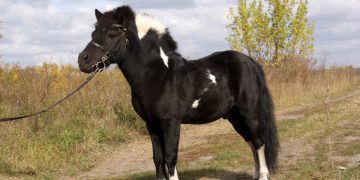Capybaras, the world’s largest rodents, have become increasingly popular due to their docile nature, unique appearance, and suitability as exotic pets or eco-tourism attractions. Breeding capybaras can be a profitable venture if managed with care and expertise. This comprehensive guide will help you turn your passion for these remarkable animals into a sustainable business.
1. Why Breed Capybaras?
Before diving into the technical aspects of breeding, it’s important to understand the motivations and opportunities behind capybara breeding:
- Growing Popularity: Capybaras are sought after as pets, in zoos, and as attractions in eco-tourism ventures due to their gentle demeanor and compatibility with other animals.
- Diverse Income Streams: Income can be generated through pet sales, eco-tourism, or selling capybara byproducts such as manure, which is excellent for organic farming.
- Conservation: Ethical breeding can help support the survival of capybara populations in the face of habitat loss.
2. Understanding Capybara Biology
To successfully breed capybaras, you need a solid understanding of their biological and reproductive characteristics.
- Natural Habitat: Capybaras are native to South America, thriving in wetlands, grasslands, and areas near water sources. They require similar conditions in captivity to remain healthy and reproduce effectively.
- Social Structure: They are highly social animals, living in groups of 10-20 in the wild. Successful breeding requires group dynamics that mimic their natural social structure.
- Reproductive Cycle:
- Females reach sexual maturity at 12-18 months, and males at 18-24 months.
- The estrous cycle lasts approximately 7-8 days, and females are receptive to mating during this time.
- Gestation lasts 150 days, and females typically give birth to 4-6 pups.
3. Setting Up Your Capybara Breeding Operation
a. Infrastructure
Capybaras have specific housing and environmental needs that must be met for successful breeding.
- Enclosure Requirements:
- Provide a large, secure enclosure of at least 200 square meters for a small breeding group (1 male and 2-3 females).
- Include natural features like grass, shaded areas, and water for swimming, as capybaras are semi-aquatic.
- Fencing:
- Use sturdy fencing at least 1.5 meters high to prevent escapes and keep predators out.
- Ensure the bottom of the fence is buried to prevent digging.
- Water Access:
- A swimming area is essential for capybaras’ physical and psychological well-being. A shallow pond or large water trough works well.
b. Feeding and Nutrition
Capybaras are herbivores and require a high-fiber diet.
- Primary Diet:
- Grass, hay, and aquatic plants should make up the majority of their diet.
- Fresh fruits and vegetables can be offered in moderation.
- Supplements:
- Provide salt licks and vitamin-mineral supplements to ensure nutritional balance.
- Water Supply:
- Fresh, clean water must always be available.
4. Selecting Breeding Stock
The quality of your breeding stock determines the success and profitability of your operation.
- Health:
- Purchase capybaras from reputable breeders who provide health records and certifications.
- Conduct health checks for parasites, genetic conditions, and overall fitness.
- Behavior:
- Choose individuals with calm, social temperaments, as aggressive animals may disrupt the group dynamic.
- Diversity:
- Maintain genetic diversity by sourcing animals from different bloodlines.
5. The Breeding Process
a. Group Dynamics
- Establish a breeding group with one dominant male and 2-3 females.
- Observe the group for signs of compatibility; fighting or excessive stress may indicate the need for adjustments.
b. Mating
- Capybaras typically mate in water. Provide a secluded swimming area to encourage natural mating behavior.
- Females in estrus will exhibit increased activity and allow the male to approach.
c. Pregnancy Management
- Monitor pregnant females for weight gain, appetite changes, and behavioral shifts.
- Provide additional high-quality feed and ensure minimal stress.
6. Birthing and Raising Pups
a. The Birthing Process
- Capybaras give birth on land, often at night. Ensure the enclosure is quiet and secure to minimize disturbances.
- Most births occur without complications, but monitor for signs of distress or prolonged labor.
b. Neonatal Care
- Pups are precocial, meaning they are born fully furred, with open eyes, and can follow their mother immediately.
- Ensure pups nurse within the first few hours, as colostrum is vital for immunity.
c. Socialization
- Capybara pups are social and thrive in group settings. Allow them to interact with the group under the mother’s supervision.
7. Health and Maintenance
Regular health maintenance is critical for a thriving breeding operation.
- Veterinary Care:
- Schedule routine check-ups and vaccinations as recommended by an exotic animal veterinarian.
- Watch for signs of illness, such as lethargy, changes in appetite, or unusual behavior.
- Parasite Control:
- Regularly deworm capybaras and monitor for external parasites like ticks or fleas.
- Hygiene:
- Clean the enclosure and water sources frequently to prevent disease.
8. Monetizing Your Capybara Breeding Operation
a. Selling Pups
- Market your capybaras to pet owners, zoos, and wildlife parks.
- Ensure all sales comply with local and international regulations regarding exotic animals.
b. Eco-Tourism
- Develop a visitor-friendly environment where people can interact with capybaras.
- Offer educational tours to raise awareness about capybaras and their natural habitats.
c. Byproducts
- Capybara manure is an excellent organic fertilizer that can be sold to gardeners and farmers.
9. Legal and Ethical Considerations
Adhere to all legal requirements and ethical guidelines to ensure your breeding operation is sustainable and responsible.
- Permits:
- Check local and international regulations on capybara ownership and breeding.
- Ethical Practices:
- Avoid overbreeding and prioritize the animals’ welfare above profit.
- Conservation Efforts:
- Contribute to conservation initiatives by donating a portion of your profits or supporting habitat restoration projects.
Conclusion
Capybara breeding can be a lucrative and fulfilling business when approached with knowledge, care, and commitment. By creating a suitable environment, maintaining high ethical standards, and managing your operation effectively, you can turn your passion for these unique animals into a thriving enterprise.
Invest in proper planning, and let your journey with capybaras become a rewarding experience for both you and these fascinating creatures.

























